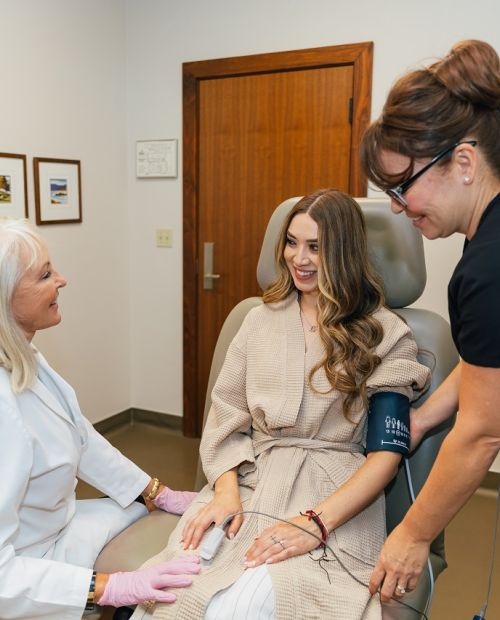What is a Labiaplasty?
The most common female genital procedure is labiaplasty where the lips of the labia minora are reduced. Patients report high satisfaction with this procedure with less discomfort during intercourse and less pulling or irritation of the excess skin. These procedures are gaining in popularity, probably due in part to the availability of information about this topic on the internet. In some cases, you may also hear labiaplasty referred to as “vaginal rejuvenation.”

Who is a Candidate for Labiaplasty?
Most patients who choose labiaplasty do so because they have uncomfortable symptoms of larger labia minora, which can include pain or discomfort during intercourse, activities like riding a bike, or when wearing certain clothing. They may also feel self-conscious about their appearance. Often, women choose a labiaplasty to restore damage caused during childbirth, but this is not always the case. If you wish to have children in the future, Dr. Maxwell may in some cases advise you to wait to have a labiaplasty so you can enjoy your results long-term. Before undergoing the surgery, you should be generally healthy overall. Dr. Maxwell will ask questions about your health history and any medications you take during a consultation to ensure that surgery is safe for you.
Labiaplasty Procedure
Anesthesia and Sedation
A labiaplasty can be performed under local anesthesia, IV sedation, or general anesthesia. The choice depends on the patient’s preference and the extent of the procedure. For example, a labiaplasty as part of a mommy makeover will always be performed under general anesthesia, while a simpler labiaplasty can be completed with local anesthesia alone.
Incision Technique
The most common technique used for labiaplasty is the trim procedure, where the excess tissue is directly removed. Another option is the wedge procedure, where a pie-shaped piece of tissue is removed to maintain the natural border. Dr. Maxwell will explain which option is best to achieve your desired results.
Tissue Removal and Reshaping
During the procedure, Dr. Maxwell will remove the excess tissue according to the chosen technique. This step is crucial for creating a more comfortable and aesthetically pleasing appearance. Scarring from the incisions is minimal and well-concealed within the natural contours of the area.
Closure and Recovery
Once the tissue removal and reshaping are complete, absorbable sutures are used to close the incisions. This helps ensure minimal scarring and aids in the healing process. Proper post-operative care will be discussed to ensure a smooth recovery.

Recovery After a Labiaplasty
The most common side effects after labiaplasty are swelling and discomfort. You may be prescribed pain medication, and ice packs can be useful to alleviate both swelling and pain. Keeping the area elevated if possible can also reduce swelling. Most labiaplasty patients can return to work about a week after their surgery. You should avoid intercourse or using tampons for at least four to six weeks after labiaplasty. Sutures will dissolve, but Dr. Maxwell will schedule a post-operative appointment to check on your healing progress. A majority of swelling should subside by about six weeks after the surgery, and it is at this point that you can typically see your results. Some residual swelling can last for several months after the procedure, but should not be noticeable.
Schedule a Consultation
To learn more about labiaplasty and find out if you are a candidate, schedule a consultation with Dr. Maxwell in Tucson. Call Maxwell Aesthetics at (520) 751-1225 or contact us online to set up your first appointment.